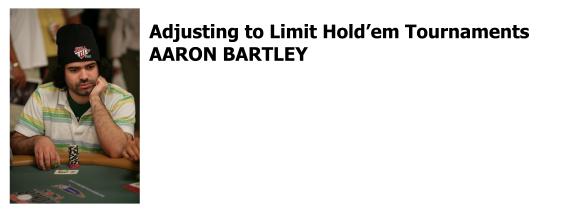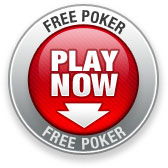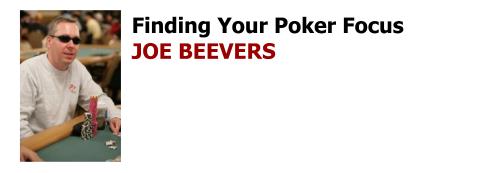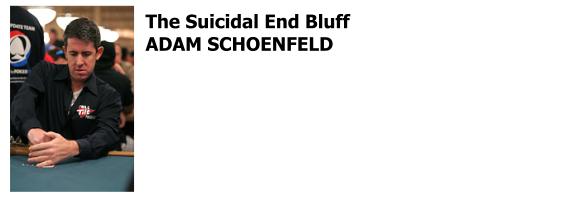
Bluffing in Limit Hold ’em is nothing like bluffing in No-Limit Hold ’em. In a Limit game, you can rarely price an opponent out of the pot if he has any kind of a made hand or draw. Sometimes you’ll try a bluff on the river because your opponent can no longer chase, but even so, his pot odds are usually so overwhelming that he’ll call with a weak hand.
Although bluffing in Limit Hold ’em is difficult, all good players understand that they need to do it on occasion. But there happens to be one situation where bluffing is absolutely never advisable, which I like to call the “suicidal end bluff” and see it used all too often.
Here’s a classic example of a suicidal end bluff from a $15/$30 Limit Hold ’em game I was playing. The player in second position opened for a raise to $30. I was in third position with pocket Queens and re-raised to $45. The player to my left capped the betting by re-raising to $60. It folded around to the big blind, and he made the call for $45 more. That’s a big call to make – you should never be calling three more bets out of position unless you have a premium hand – so he had to have either a huge hand or he was a weak player making a big mistake. In any case, the original raiser called $30 more, I called $15 and we headed to the flop four-handed.
The flop came 8h-6d-7h, a highly coordinated board. It wasn’t the greatest flop for Q-Q. If someone was totally out of line with 10-9, they flopped the nuts. If someone had the A-K of hearts, they were actually a favorite over my hand. And someone could have had a set of sixes, sevens or eights. But at the same time, I still had an over-pair to the board, so it certainly wasn’t the worst flop imaginable.
The player in the big blind checked, the initial raiser checked, and I decided to bet out, putting $15 into a pot of $250. I knew I couldn’t get rid of any draws, but I wanted to maybe thin the field by getting rid of a player with just a random Ace or King. After I bet $15, the player behind me raised to $30 and then the big blind re-raised to $45. The player to my right folded, and the action was back on me. And here’s a key concept: because I could close the action and show strength, I capped it to $60, rather than just calling, as I would have done if there were additional raises available behind me. The player to my left folded, and the big blind called $15 more.
So, now it was just me and the big blind – the player who called three extra bets pre-flop and check-raised the flop – going to the turn.
The turn was a great card for me, the 3c. It didn’t complete any draws; any hand that was worse than mine on the flop was still worse than mine on the turn. My opponent checked, I bet $30 and he called.
And I must admit that I had no idea what hand he could possibly have at this point. My best guess was that he had a draw, because a lot of people will play their draws aggressively on the flop and then slow down on the turn when they miss.
The river brought the 7d, pairing the board. If he held a seven, then he just made the best hand, but I couldn’t really think of a hand where he had a seven. He checked, which really made it clear he didn’t have a seven. If he had a seven, wouldn’t he bet there to guarantee I’d have to call behind him and not check behind him? Confident that I had the best hand, I bet my queens for $30 more into a pot of $460.
And he surprised me by check-raising to $60.
Naturally, it crossed my mind that he could have had A-7 or a full house, but this was a situation where, even if I suspected I was beat, I had to call $30 with the pot at $550. So I called, and what was his hand?
Jh-9c.
His first mistake: calling $45 more from the big blind pre-flop with J-9 off-suit when other players had shown tremendous strength. His second mistake: semi-bluffing the flop and getting involved in a capped pot, which was way too aggressive with only an up-and-down straight draw.
But his biggest mistake came on the end. He’d totally whiffed and checked. I bet and he tried the check-raise bluff. With the strength that I’d shown, what hands could I possibly have had that I’d fold for $30 more there? He threw away $60 on the river, plain and simple. This was the very definition of the suicidal end bluff.
In No-Limit Hold ‘em, a big bluff would have a chance of working in that spot. But in Limit Hold ’em, you have to recognize situations where a bluff just won’t work. Fold your hand, and save yourself a lot of money.
Adam Schoenfeld
About Adam: After making a fortune as the vice president of an Internet analysis firm, Adam decided to quit his job and pursue his dream of playing poker full time. A highly respected pro in the poker community.
 >>TOP POKER ROOMS FOR USA RESIDENTS – Safe, reputable poker rooms that welcome Amercian players
>>TOP POKER ROOMS FOR USA RESIDENTS – Safe, reputable poker rooms that welcome Amercian players
 If a poker player wants an edge, he must move with the times. Today, a style which was successful only a year ago can already be outdated; tomorrow, he could be the sucker.
If a poker player wants an edge, he must move with the times. Today, a style which was successful only a year ago can already be outdated; tomorrow, he could be the sucker.![]() ABOUT STEPHEN: Stephen Kalhamer is an author, mathematician and poker fan. He is a professional poker coach and plays online at Bookmaker Poker. To find out more about him, join him at a table sometime soon.
ABOUT STEPHEN: Stephen Kalhamer is an author, mathematician and poker fan. He is a professional poker coach and plays online at Bookmaker Poker. To find out more about him, join him at a table sometime soon.![]() ABOUT BOOKMAKER POKER: Check out the latest player reviews of at GoonersGuide.com
ABOUT BOOKMAKER POKER: Check out the latest player reviews of at GoonersGuide.com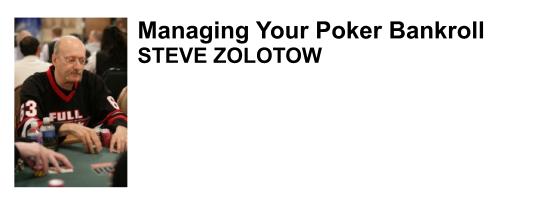 People always ask, “How much do I need to play in a certain stake game?” The usual answer to all poker questions is, “It depends.” But in this case, it is the wrong question. The question really should be, “Given my temperament and current financial situation, how much can I risk in a game?”
People always ask, “How much do I need to play in a certain stake game?” The usual answer to all poker questions is, “It depends.” But in this case, it is the wrong question. The question really should be, “Given my temperament and current financial situation, how much can I risk in a game?”
 ABOUT STEVE ZOLOTOW:
ABOUT STEVE ZOLOTOW: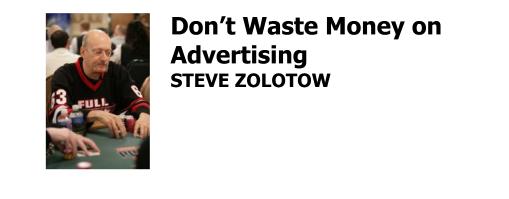 Table image can be a very powerful tool at the poker table, especially in ring games where you can expect to play a long session against the same opponents. But when it comes to tournament play, trying to project a certain table image can often times prove to be a futile endeavor. Your attempt might end up costing you precious chips now without gaining a later advantage, since you may be at a different table against different opponents a few minutes later.
Table image can be a very powerful tool at the poker table, especially in ring games where you can expect to play a long session against the same opponents. But when it comes to tournament play, trying to project a certain table image can often times prove to be a futile endeavor. Your attempt might end up costing you precious chips now without gaining a later advantage, since you may be at a different table against different opponents a few minutes later.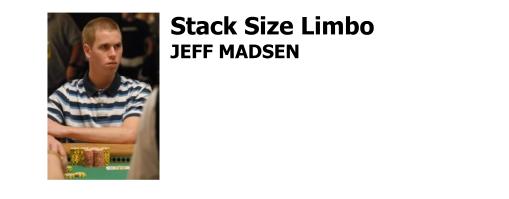 When you’re playing a tournament and sitting on around 15 big blinds, you can face some seriously tough pre-flop decisions. Welcome to stack size limbo. It feels likes you have too many chips to push all-in, but a standard pre-flop raise can prove disastrous if an aggressive player comes over the top and puts you to the test.
When you’re playing a tournament and sitting on around 15 big blinds, you can face some seriously tough pre-flop decisions. Welcome to stack size limbo. It feels likes you have too many chips to push all-in, but a standard pre-flop raise can prove disastrous if an aggressive player comes over the top and puts you to the test.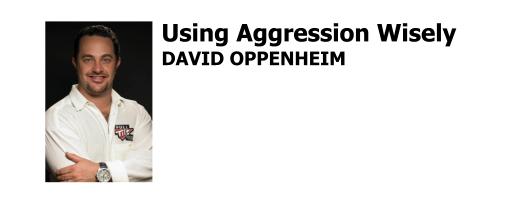 In the game of Hold ‘em, especially No Limit, aggression is usually rewarded. By being aggressive, you are putting your opponent in an uncomfortable situation and forcing him to either make a hand or make a bluff. You take over control of the pot and put yourself in the driver’s seat.
In the game of Hold ‘em, especially No Limit, aggression is usually rewarded. By being aggressive, you are putting your opponent in an uncomfortable situation and forcing him to either make a hand or make a bluff. You take over control of the pot and put yourself in the driver’s seat.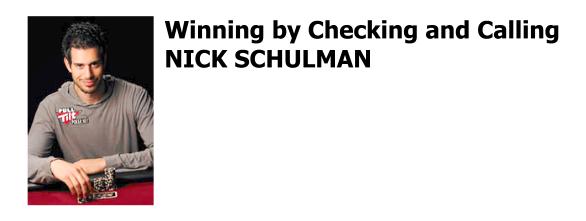
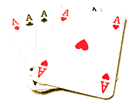
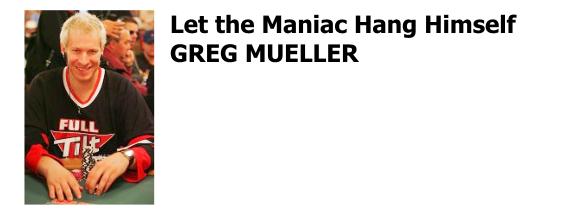
 Compare the
Compare the 